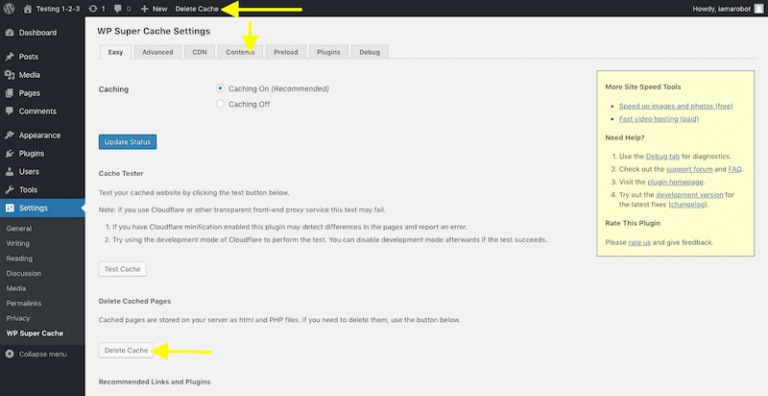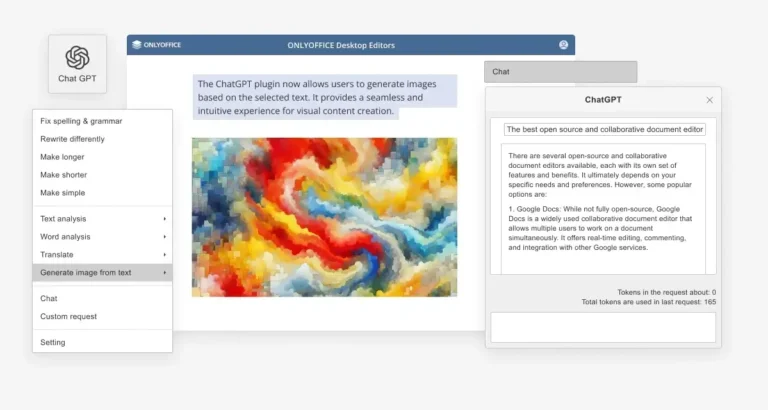Are you curious about how to convert Unicode code points to characters in Python? Look no further!
In this article, we will explore the chr() function and its importance in handling Unicode code points.
We will also discuss the differences between ord() and chr() functions, provide a step-by-step guide on using chr(), and showcase practical examples of its application.
Stay tuned to learn more about working with Unicode code points, best practices, and resources for further learning. Let’s dive in!
Key Takeaways:
Contents
- 1 Key Takeaways:
- 2 Introduction to chr() Function in Python
- 3 Python ord() and chr() Functions
- 4 Converting Unicode Code Points to Characters using chr()
- 5 Working with Unicode Code Points in Python
- 6 Application of chr() Function in Python
- 7 Unicode Code Points and String Literals
- 8 Resources for Further Learning
- 9 Frequently Asked Questions
- 9.1 What is the purpose of chr() in Python?
- 9.2 How do I use chr() in my code?
- 9.3 Can I use chr() to convert non-Unicode code points to characters?
- 9.4 What happens if I provide an invalid Unicode code point to chr()?
- 9.5 Can chr() be used to convert multiple code points at once?
- 9.6 Are there any alternatives to using chr() for converting Unicode code points?
- chr() function in Python is essential for converting Unicode code points to characters.
- chr() function is simple to use and provides a step-by-step guide for converting code points to characters.
- Using chr() function allows for efficient handling of Unicode code points and string literals in Python.
Introduction to chr() Function in Python
Introduction to chr() function in Python provides insights into converting code points to characters using a built-in Python function.
The text is already contained within HTML tags, so it does not require further formatting.
Overview of Unicode Code Points and Characters
The overview of Unicode code points and characters delves into the standard representation and encoding of characters, including ASCII and extended character sets.
Unicode code points are unique numbers that represent each character in the Unicode standard. These code points are designed to cover the characters of all known languages and symbol sets. The relationship between code points and characters is fundamental to understanding how text is encoded and displayed across different systems. Character encoding schemes determine how these code points are mapped to binary data for storage and transmission. ASCII, which stands for American Standard Code for Information Interchange, is a basic character encoding scheme that uses 7-bit binary numbers to represent a limited set of characters.
Importance of chr() Function
Understanding the importance of chr() function in Python is crucial for efficiently converting numeric code points into their corresponding characters.
The chr() function in Python plays a vital role in handling Unicode representations, making it easier to work with character data in various applications. It is commonly used in text processing tasks, such as encoding and decoding strings, generating ASCII characters, and handling emojis within a program.
For example, when dealing with internationalization, chr() can help convert Unicode characters to their respective symbols, ensuring proper communication and display of text across different languages.
Python ord() and chr() Functions
Python ord() and chr() functions are essential tools for converting characters to integers and vice versa, providing versatile capabilities for text manipulation.
The ord() function in Python takes a character as an argument and returns its corresponding Unicode code point. This is particularly useful when dealing with encryption algorithms or sorting strings based on their character codes.
On the other hand, the chr() function does the opposite by taking an integer representing a Unicode code point and returning the corresponding character. Together, these functions enable seamless conversion between characters and integers in Python, allowing for efficient handling of text-based data.
Understanding ord() and chr() Functions
Gaining a comprehensive understanding of ord() and chr() functions involves exploring their conversion mechanisms between characters and integers in Python.
The ord() function in Python is used to retrieve the Unicode code point of a character. When a character is passed as an argument to the ord() function, it returns the corresponding integer representing the Unicode value. On the other hand, the chr() function performs the reverse operation by taking an integer representing a Unicode code point and returning the character associated with that code point.
These functions play a crucial role in text processing tasks where converting between characters and integers is necessary. For example, they are commonly used in encryption algorithms, data compression techniques, and encoding transformations.
Key Differences Between ord() and chr()
Recognizing the key differences between ord() and chr() functions in Python aids in leveraging their distinct functionalities for character encoding and decoding operations.
The ord() function returns the Unicode code point representation of a character, making it essential for converting characters to their corresponding integers. For example, ord(‘A’) would output 65, representing the ASCII value of ‘A’.
On the other hand, the chr() function performs the reverse operation by converting an integer back to its corresponding Unicode character. An illustration would be chr(65) resulting in ‘A’, effectively reversing the earlier operation.
Converting Unicode Code Points to Characters using chr()
Converting Unicode code points to characters using the chr() function in Python facilitates seamless translation of numeric representations into readable text elements.
To utilize this function effectively, one must first understand the concept of Unicode and how characters are represented in computer systems. Each character is assigned a unique numeric value known as a code point, which can range from 0 to 1,114,111 in Unicode. By passing a specific code point as an argument to the chr() function, it returns the corresponding Unicode character represented by that code point.
Step-by-Step Guide to Using chr() Function
A step-by-step guide to using the chr() function elucidates the process of converting Unicode code points to characters in Python.
Begin by understanding that the chr() function in Python takes a Unicode code point as an argument and returns the corresponding character. To convert a numeric code point to its corresponding character, simply pass the code point as an argument to the chr() function. It is important to note that the code point should be an integer representing a valid Unicode code point.
For example, to convert the code point 65 into its corresponding character, you can use chr(65), which would return the character ‘A’. This straightforward process allows for easy conversion of numeric codes into readable characters in Python.
Examples of Converting Unicode Code Points to Characters
Illustrative examples showcasing the conversion of Unicode code points to characters offer practical insights into the functionality and utility of the chr() function in Python.
For instance, consider the scenario where you have a Unicode code point, say 65, representing the character ‘A’. By using chr(65), you would get the output ‘A’. This function becomes especially handy when dealing with internationalization, such as converting code points to characters in different languages.
In a more advanced application, suppose you are building a text encoder where you need to convert a series of Unicode code points to characters to render readable text. The chr() function efficiently facilitates this process, enhancing the overall functionality and user experience.
Working with Unicode Code Points in Python
Efficiently working with Unicode code points in Python involves understanding the numerical representations of characters and employing suitable functions like chr() for seamless text processing.
One crucial aspect to consider when dealing with Unicode code points in Python is the precision of character representations. Each Unicode code point corresponds to a unique integer value, enabling the encoding of a vast range of characters from various languages and symbol sets.
Selecting the appropriate encoding scheme is essential for accurately representing and transmitting text data. Python offers a wide array of built-in codecs that facilitate seamless conversion between different character encodings such as UTF-8, UTF-16, and more.
Regarding converting Unicode code points to their corresponding characters, the chr() function comes in handy. By providing a Unicode code point as an argument, chr() returns the character represented by that code point, allowing for efficient manipulation and processing of textual data.
Exploring Unicode Code Points in Python
Delving into the exploration of Unicode code points in Python unveils the intricate relationship between numerical representations and textual characters within programming contexts.
Unicode code points play a fundamental role in modern computing, serving as a universal system for encoding text characters from various writing systems, symbols, and emojis. In Python, each character is assigned a unique numeric value, allowing for seamless handling of multilingual text and symbol representation.
Understanding Unicode code points is crucial for internationalization and localization of software applications, enabling them to support diverse languages and cultural symbols seamlessly. Python’s built-in support for Unicode simplifies the process of working with different character sets, ensuring consistency and accuracy in data processing.
Best Practices for Handling Unicode Code Points
Implementing best practices for handling Unicode code points in Python ensures efficient text processing, character manipulation, and encoding tasks within diverse programming scenarios.
One crucial aspect of managing Unicode in Python is understanding encoding considerations. Python 3, by default, uses UTF-8 encoding, but it’s essential to specify the correct encoding when working with input/output operations and external data sources. Utilizing libraries like unicodedata can aid in navigating code points, character properties, and normalization forms.
Error handling plays a vital role in Unicode processing. Properly dealing with encoding and decoding errors through techniques like exception handling and fallback strategies ensures robustness in handling varied textual data.
For optimized performance, employing techniques such as lazy evaluation, batch processing, and memory-efficient algorithms can help streamline text processing operations with large datasets.
Application of chr() Function in Python
The application of chr() function in Python extends to diverse scenarios, enabling seamless character conversion and manipulation for efficient text processing.
One of the most practical applications of the chr() function is in data parsing and file handling where it comes in handy for translating numerical codes into human-readable characters.
In network programming, chr() function is valuable for encoding and decoding data while communicating with external systems or devices.
Text encryption and decryption routines often rely on chr() in Python to convert characters to their corresponding ASCII values and vice versa, enhancing data security.
Common Use Cases for chr() Function
Common use cases for the chr() function in Python encompass character encoding, text manipulation, and Unicode conversion tasks essential for data processing and content generation.
For instance, when dealing with internationalization in web development, the chr() function comes in handy for translating special characters and symbols, ensuring proper rendering across different languages. In data analysis projects, this function assists in converting numerical Unicode values to their corresponding characters, facilitating easier interpretation and visualization of results.
Practical Examples of Implementing chr() Function
Practical examples of implementing the chr() function in Python offer hands-on experience in character conversion, encoding tasks, and text processing operations within coding environments.
For instance, in a bioinformatics project, the chr() function is used to convert ASCII values to corresponding characters in DNA sequence analysis, aiding in identifying genetic mutations more efficiently.
In a cybersecurity application, utilizing chr() allows for the transformation of decimal numbers to characters for generating strong encryption keys, enhancing data security measures.
In natural language processing, incorporating the chr() function enables the conversion of numerical codes to readable text, facilitating sentiment analysis and language modeling tasks.
Unicode Code Points and String Literals
Understanding the interactions between Unicode code points and string literals in Python elucidates the representation, encoding, and manipulation of textual characters within programming constructs.
When dealing with Unicode code points, it is crucial to consider encoding standards to ensure that characters are correctly represented in various languages and scripts. String literals serve as the vehicle for storing these encoded characters, enabling programmers to work seamlessly with different types of text data.
Python provides robust support for character decoding, allowing developers to convert encoded characters into human-readable text effortlessly. This encoding and decoding process significantly impacts how strings are handled, affecting operations such as comparison, concatenation, and search within text.
Understanding Unicode Code Points in String Literals
An in-depth understanding of Unicode code points in string literals delves into the nuanced representation of characters, encoding schemes, and textual manipulations within Python programs.
Unicode, the universal character encoding standard, assigns each character a unique numeric value known as a code point. In Python, these code points are crucial for handling various languages and symbols efficiently. When working with string literals, it is essential to consider the encoding used to ensure correct interpretation of characters. The adoption of UTF-8, a popular encoding scheme that supports a wide range of characters, plays a pivotal role in maintaining compatibility across different platforms.
Using Escape Sequences for Unicode Code Points
Utilizing escape sequences for Unicode code points in Python enables precise character representation, special characters handling, and controlled textual output within coding environments.
Escape sequences in Python, such as ‘\\U’ and ‘\\u’, offer a way to express Unicode characters using their hexadecimal code points. These sequences are essential for displaying non-ASCII characters accurately and managing different language scripts seamlessly in programming tasks.
By incorporating escape sequences, developers can easily insert special characters like newline ‘\\n’, tab ‘\\t’, or backslash ‘\\’ in strings without causing syntax errors. Utilizing escape sequences aids in improving code readability by clearly delineating special characters and ensuring consistent output formatting across various platforms.
Resources for Further Learning
Accessing resources for further learning on Unicode concepts, Python text processing, and character encoding provides valuable insights and educational materials for enhancing programming skills.
For those interested in delving deeper into Unicode concepts, a great starting point is the book ‘Understanding Unicode’ by Sam Cook, which offers a comprehensive overview of Unicode encoding schemes and character sets.
Online tutorials such as the ‘Ultimate Python Text Processing Tutorial’ on Real Python provide step-by-step guidance on leveraging Python libraries and modules for efficient text manipulation and analysis.
For a more structured approach, enrolling in courses like ‘Mastering Character Encoding in Python’ on Udemy can significantly deepen your understanding of encoding techniques and best practices for handling multilingual text in Python applications.
Recommended Reading Materials
Exploring recommended reading materials offers an enriching educational experience on Unicode concepts, character encoding, and text manipulation techniques within the Python programming language.
Understanding Unicode principles is essential for handling a wide range of characters and symbols efficiently in programming tasks. Various textbooks like ‘Python 3 Text Processing with NLTK 3 Cookbook’ by Jacob Perkins and Alper Yegin provide in-depth explanations on Unicode encoding and decoding methods in Python.
Character encoding practices are further elucidated in online resources such as ‘The Absolute Minimum Every Software Developer Must Know About Unicode and Character Sets’ by Joel Spolsky. These resources delve deep into the intricacies of encoding standards such as UTF-8, UTF-16, and UTF-32, which are crucial for text handling in diverse languages.
For a comprehensive guide on Python text processing, ‘Natural Language Processing in Action’ by Lane, Howard, and Hapke offers a practical approach to implementing text analysis, tokenization, and feature extraction using Python libraries like NLTK and spaCy. This book covers advanced topics like sentiment analysis, named entity recognition, and text classification.
Online Tutorials and Courses on Unicode in Python
Engaging with online tutorials and courses focused on Unicode concepts in Python provides interactive educational lessons, practical coding exercises, and in-depth knowledge on character encoding and text processing.
These specialized resources offer a structured approach to delve into the complexities of Unicode principles, guiding learners through the nuances of encoding different characters, understanding code points, and handling multilingual data effectively. By exploring these resources, individuals can enhance their proficiency in Python text manipulation, mastering techniques for formatting strings, extracting specific information, and manipulating textual data with precision.
These educational platforms not only equip learners with theoretical knowledge but also give the power to them with hands-on experience, enabling them to apply their understanding in real-world scenarios. From basic concepts to advanced techniques, these tutorials cater to learners of various levels, ensuring a comprehensive learning experience in the realm of character encoding and Unicode handling within Python programming.
Frequently Asked Questions
What is the purpose of chr() in Python?
The chr() function in Python is used to convert a given Unicode code point to its corresponding character.
How do I use chr() in my code?
To use chr() in your code, simply provide the Unicode code point as the argument, and the function will return the corresponding character.
Can I use chr() to convert non-Unicode code points to characters?
No, chr() can only be used to convert Unicode code points to characters. For non-Unicode code points, you can use the chr() function in the unicodedata module.
What happens if I provide an invalid Unicode code point to chr()?
If an invalid Unicode code point is provided to chr(), a ValueError will be raised.
Can chr() be used to convert multiple code points at once?
No, chr() can only convert one code point at a time. If you need to convert multiple code points, you can use a loop or list comprehension to call chr() for each code point.
Are there any alternatives to using chr() for converting Unicode code points?
Yes, you can also use the unichr() function in Python 2 or use the string formatting method with the \u or \U escape sequences. However, chr() is the recommended method as it is more efficient and works in both Python 2 and 3.





